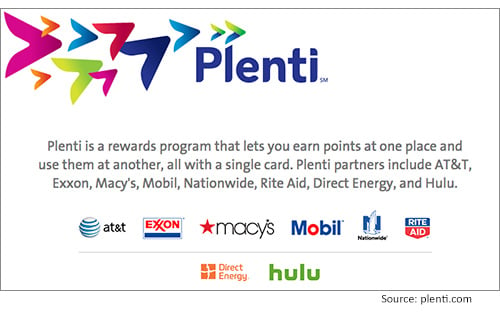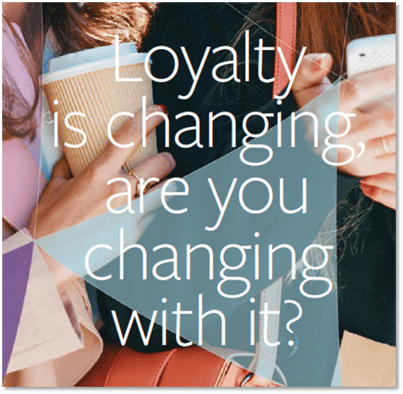Bond
Get Ready – How Standalone Loyalty Programs Can Compete with Plenti
What are the implications of the Plenti launch on May 4th? While the U.S. marketplace has distinct differences compared to other countries where coalition models thrive, one can suspect a lot of attention against this landmark initiative. Coalition, by design, has an inherent power of helping partners acquire new customers by harnessing each brand’s customer pool. It can also move market share away from retailers with standalone programs, as customers tend to gravitate toward programs that alleviate the need to carry multiple cards, and collect multiple currencies. Last, but not least, coalition tends to accelerate members’ currency-earning power by getting them to their rewards quicker.

So, how should standalone loyalty programs defend against these threats? In regions with successful coalitions, we also see standalone loyalty programs that have prospered. Take the Canadian marketplace where Air Miles and Aeroplan (two key coalition programs) have extremely high penetration and a wide range of hundreds of partners. Penetration might be high, but our just released 2015 Loyalty Report finds that Canadian coalition programs rank lowest in satisfaction at 19% vs. the category average of 30%. Large-scale standalone loyalty programs, such as Shoppers Optimum (operated by Shoppers Drug Mart), SCENE (operated by Cineplex and Scotia bank), Petro-Points (operated by Petro-Canada), and many others not only co-exist with coalition — they thrive. Operators of standalone programs need to ensure their programs are meeting their memberships’ needs by following some of the loyalty design principles we utilize at Bond:
- Brand alignment – This is core to your loyalty design and refers to the precise relation of the program’s components with the attributes and personality embodied by the brand. Marketers should be concerned with the extent to which attributes of their loyalty programs support and align with their brands’ attributes and positioning. Doing so can deliver nearly 3x higher member satisfaction compared to programs that fail to achieve strong brand alignment. It can be very challenging to get a coalition’s brand to align with all partner brands, given the vast array of brand types that could join a coalition. Getting this right will ensure your program is designed to succeed.
- More than a transactional relationship – Understanding human motivation is the key to successful loyalty program design. It is important to understand how and when tactical monetary features, such as discounts, cashback, and rebates, are used and how to integrate non-monetary benefits into your program. In fact, sometimes non-monetary benefits can have a higher value to certain customer segments. Your loyalty program should strive to make customer connections that go beyond discounts or points. Coalition programs focus much of their attention on helping customers get to their monetary benefits quicker.

- Communication relevance – Bond’s research reveals a tight link between customer satisfaction and the extent to which customers deem loyalty program communications as personally relevant. It seemed the higher the relevance, the higher the satisfaction with the program. 56% of customers want to receive communications from the programs in which they are enrolled, yet only 46% consider those communications to be relevant. Given the investment most programs make in communications, marketers can do more to ensure their members feel valued and important. A coalition loyalty program has the benefit of a shared marketing and targeting cost structure, and will be able to communicate more frequently and very precisely with its partners’ customers. Therefore, it will be even more important to ensure each standalone loyalty program communication effort with members is highly relevant and rewarding.
- Engendering trust – As marketers, we stand at an interesting crossroads: customers expect increased customization and personally relevant content from brands, yet are reluctant to share the information that enables such personalization. Recent high-profile data breaches have made customers even more aware of privacy and security concerns. Willingness to share personal information is strongly correlated with trust. According to our research, 37% of members who strongly believe a program is trustworthy are willing to share information – more than 3x the average respondent. Building trust with your customers is even more important as a coalition forms, as new members likely have little familiarity with the coalition brand (other than their partners). Fortifying this trust early is more essential than ever.
- Demonstrating value – It’s tough to compete with the “speed to earn” of coalition loyalty, given the number of outlets to earn a common currency and get to rewards fast. Standalone loyalty programs should be proactive with strong, targeted campaigns to customer segments that may be at risk of gravitating toward a coalition. Creating a series of loyalty accelerator campaigns should be a high priority. This is no different than what a retailer would do when faced with a competitive retail entrant opening up across the street. Creating demonstrative value, both monetary and non-monetary, and locking your customers’ loyalty will help stem loyalty program attrition.
It’s an exciting time for loyalty, and we are seeing many brands looking for answers about how to improve their underperforming programs and differentiate from the competition. Investing in customer experience, and striving to be a loyalty brand and not just a brand with a loyalty program, are other critical steps marketers should consider to ensure customers continue to shop, advocate, and return again and again.

This blog is the third in a series. Subscribe to recieve the latest blog posts from Bond Brand Loyalty.